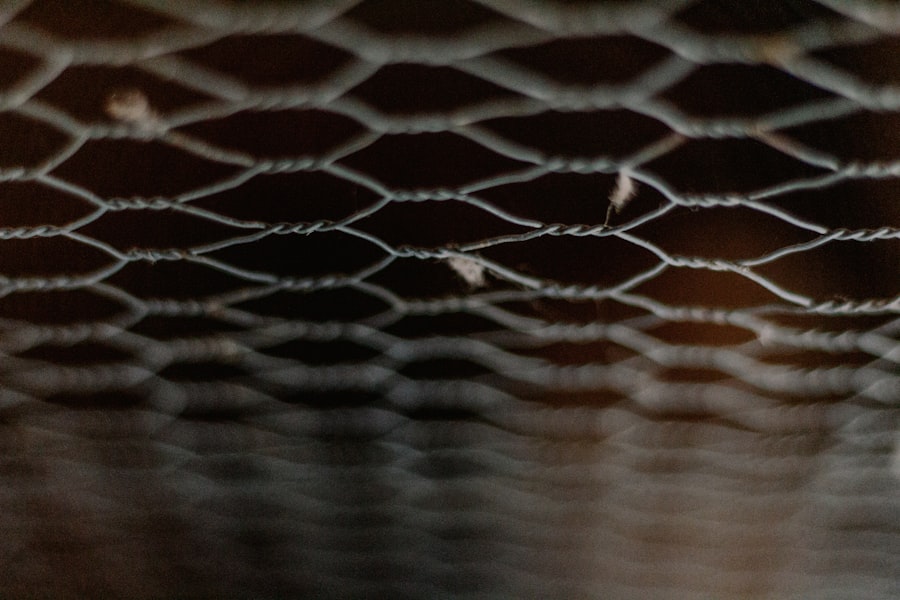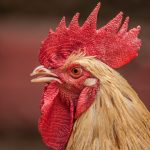The height of the fence surrounding a chicken enclosure is a critical factor in poultry management. A properly sized fence serves multiple purposes, including protecting chickens from predators, preventing them from wandering into undesired areas, and providing a secure environment for the birds to roam within their designated space. Fence height plays a crucial role in deterring predators such as foxes, raccoons, and domestic dogs, which can pose significant threats to chickens.
An inadequately low fence may be easily breached by these animals, potentially resulting in harm or death to the flock. Furthermore, a fence of insufficient height increases the risk of chickens escaping, which can lead to loss or injury of the birds. Ensuring an appropriate fence height is essential for maintaining the overall safety, security, and well-being of a chicken flock.
It allows the birds to feel protected while also granting them the freedom to move about their enclosure without the risk of predation or escape.
Table of Contents
- 1 Factors to Consider When Determining the Ideal Fence Height
- 2 Recommended Fence Height for Different Chicken Breeds
- 3 The Role of Roosting Bars and Other Enrichment in Preventing Chickens from Jumping Over Fences
- 4 Alternatives to Increasing Fence Height for Chicken Enclosures
- 5 Tips for Training Chickens to Stay within Enclosures
- 6 Maintenance and Upkeep of Fences to Prevent Chickens from Escaping
- 7 FAQs
- 7.1 What is the recommended fence height to keep chickens from jumping out?
- 7.2 Why is it important to keep chickens from jumping out of their enclosure?
- 7.3 What are some factors to consider when determining the appropriate fence height for chickens?
- 7.4 Are there any alternative methods to prevent chickens from jumping out of their enclosure?
- 7.5 What are some popular fencing options for chicken enclosures?
Key Takeaways
- Fence height is crucial for chicken enclosures as it helps to prevent chickens from escaping and keeps them safe from predators.
- Factors to consider when determining the ideal fence height include the size and breed of the chickens, the presence of predators, and the layout of the surrounding area.
- Recommended fence height varies for different chicken breeds, with larger breeds requiring taller fences to prevent them from flying over.
- Roosting bars and other enrichment can help prevent chickens from attempting to jump over fences by keeping them occupied and content within their enclosure.
- Alternatives to increasing fence height for chicken enclosures include using netting or wire covers, installing electric fencing, or using deterrents to discourage chickens from attempting to escape.
Factors to Consider When Determining the Ideal Fence Height
Chicken Size and Breed
The size and breed of the chickens are crucial factors to consider. Larger breeds, such as Orpingtons or Brahmas, may require a taller fence to prevent them from flying over, while smaller breeds like bantams may be content with a lower fence.
Chicken Age, Health, and Predators
The age and health of the chickens should also be considered. Younger and healthier chickens may be more active and prone to jumping or flying, requiring a taller fence to contain them. Additionally, the presence of predators in the area, such as foxes or raccoons, may necessitate a taller fence to provide adequate protection for the chickens.
Terrain, Layout, and Purpose of the Enclosure
The terrain and layout of the surrounding area should also be taken into account. If the enclosure is located near trees or other structures that could provide a launching point for the chickens, a taller fence may be needed to prevent them from escaping. Lastly, the purpose of the enclosure should be considered. If the chickens are primarily kept for egg production and are not allowed to free-range, a taller fence may be necessary to ensure they stay within their designated area.
Recommended Fence Height for Different Chicken Breeds

The recommended fence height for different chicken breeds can vary depending on their size, activity level, and ability to fly. For larger and more active breeds such as Rhode Island Reds or Leghorns, a fence height of at least 6 feet is recommended to prevent them from flying over. These breeds are known for their strong flying abilities and may attempt to escape if not properly contained.
On the other hand, smaller and less active breeds such as Silkies or Polish chickens may be content with a fence height of 4-5 feet. Bantam breeds, which are even smaller than standard chicken breeds, may only require a fence height of 3-4 feet due to their limited flying abilities. However, it’s important to note that individual chickens within each breed may vary in their ability to fly or jump, so it’s always best to err on the side of caution and opt for a taller fence if in doubt.
Additionally, if there are known predators in the area, it’s advisable to increase the fence height by a few feet to provide an extra layer of protection for the chickens.
The Role of Roosting Bars and Other Enrichment in Preventing Chickens from Jumping Over Fences
In addition to increasing fence height, incorporating roosting bars and other enrichment within the chicken enclosure can play a significant role in preventing chickens from jumping over fences. Roosting bars provide chickens with a designated area to perch and rest, which can help reduce their desire to fly or jump over the fence. By providing ample roosting space within the enclosure, chickens are less likely to seek out alternative perching spots outside of the fenced area.
Furthermore, enriching the chicken enclosure with features such as dust baths, scratching areas, and natural foliage can help keep the chickens engaged and content within their designated space. Chickens that are provided with plenty of mental and physical stimulation are less likely to attempt escaping over the fence in search of new experiences or resources. By creating a stimulating environment within the enclosure, chickens are more likely to remain content and satisfied within their designated space, reducing the likelihood of escape attempts.
Alternatives to Increasing Fence Height for Chicken Enclosures
While increasing fence height is often the most effective way to prevent chickens from escaping, there are alternative methods that can be used in conjunction with or in place of raising the fence height. One alternative method is to install a barrier extension on top of the existing fence. This can be achieved by adding wire mesh or netting to extend the height of the fence, making it more difficult for chickens to fly or jump over.
Another alternative is to use deterrents such as motion-activated sprinklers or noise devices that startle chickens when they approach the fence, discouraging them from attempting to escape. Additionally, creating a secure roof or cover for the chicken enclosure can also prevent chickens from escaping by flying over the fence. This can be achieved using wire mesh or netting to create a secure overhead barrier that prevents chickens from gaining enough height to fly over the fence.
By implementing these alternative methods in combination with other preventative measures, such as roosting bars and enrichment, it’s possible to effectively contain chickens within their designated enclosure without solely relying on increasing fence height.
Tips for Training Chickens to Stay within Enclosures

Positive Reinforcement with Treats
One effective method is to use treats as a form of positive reinforcement when chickens remain within their designated area. By rewarding them with treats when they stay within the enclosure, chickens learn that staying inside is associated with positive outcomes, encouraging them to remain within their designated space.
Establishing Clear Boundaries
Another tip for training chickens is to establish clear boundaries within the enclosure using visual markers such as flags or tape. By clearly defining the boundaries of their space, chickens are more likely to recognize and respect these boundaries, reducing their inclination to wander outside of the designated area.
Building a Strong Bond
Additionally, spending time with the chickens in their enclosure and engaging in activities such as feeding, watering, and providing enrichment can help build a strong bond between chickens and their designated space, further reinforcing their desire to stay within the enclosure.
Maintenance and Upkeep of Fences to Prevent Chickens from Escaping
Regular maintenance and upkeep of fences are essential for preventing chickens from escaping. This includes inspecting the integrity of the fence regularly to identify any weak spots or areas that may need repair or reinforcement. Ensuring that all posts are secure and that there are no gaps or openings in the fencing material is crucial for maintaining a secure enclosure for the chickens.
In addition to regular inspections, it’s important to keep vegetation around the perimeter of the enclosure trimmed and maintained. Overgrown vegetation can provide an easy launching point for chickens attempting to escape by jumping over the fence. By keeping vegetation trimmed and clear from the perimeter of the enclosure, it becomes more difficult for chickens to gain enough height or leverage to escape.
Furthermore, reinforcing the base of the fence with buried wire mesh or hardware cloth can prevent digging predators such as foxes or raccoons from gaining access to the enclosure and potentially causing panic among the chickens that could lead them to attempt escaping over the fence. By implementing these maintenance and upkeep practices, it’s possible to maintain a secure and effective enclosure for keeping chickens safe and contained within their designated space.
If you’re looking to keep your chickens from jumping out of their coop, you may want to consider the height of your fence. According to a recent article on Poultry Wizard, the height of the fence can play a crucial role in keeping your chickens contained. For more information on keeping chickens and other poultry, you can check out their article on chicken coop maintenance.
FAQs
What is the recommended fence height to keep chickens from jumping out?
The recommended fence height to keep chickens from jumping out is at least 6 feet tall. This height will prevent most chicken breeds from being able to fly or jump over the fence.
Why is it important to keep chickens from jumping out of their enclosure?
It is important to keep chickens from jumping out of their enclosure to protect them from predators and to prevent them from wandering into areas where they could be harmed or cause damage.
What are some factors to consider when determining the appropriate fence height for chickens?
Some factors to consider when determining the appropriate fence height for chickens include the breed of chickens, their ability to fly, and the presence of predators in the area.
Are there any alternative methods to prevent chickens from jumping out of their enclosure?
In addition to using a tall fence, other methods to prevent chickens from jumping out of their enclosure include clipping their wings, providing adequate space and enrichment within the enclosure, and using netting or covers over the top of the enclosure.
What are some popular fencing options for chicken enclosures?
Popular fencing options for chicken enclosures include hardware cloth, welded wire, chain link, and electric poultry netting. These options can be used to create a secure and effective barrier to keep chickens from jumping out.
Meet Walter, the feathered-friend fanatic of Florida! Nestled in the sunshine state, Walter struts through life with his feathered companions, clucking his way to happiness. With a coop that’s fancier than a five-star hotel, he’s the Don Juan of the chicken world. When he’s not teaching his hens to do the cha-cha, you’ll find him in a heated debate with his prized rooster, Sir Clucks-a-Lot. Walter’s poultry passion is no yolk; he’s the sunny-side-up guy you never knew you needed in your flock of friends!







